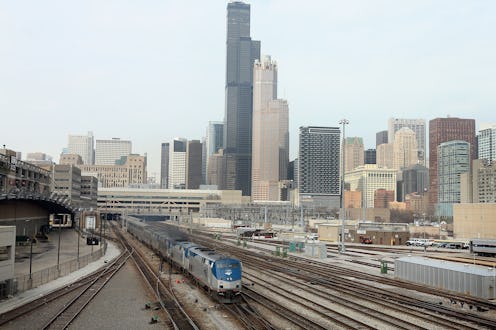News
Do Trains Speed Often?
Authorities have yet to officially identify the cause of the Amtrak train crash Tuesday that left eight people dead, more than 200 injured, and a few passengers still missing, but preliminary data has suggested the train's speed could be a significant factor in the train's derailment. The train was found to be going 106 miles per hour as it rounded a curve in Philadelphia, more than twice the posted speed limit, the National Safety Transportation Board said in a press conference Wednesday. So how often do trains speed?
Trains are less likely to speed than cars because of heavy federal oversight. Robert Halstead, a railroad accident forensics expert, told CNN the speed limit on a track is generally regulated more tightly than what you'd expect when driving a car on a highway. He said while car drivers can often get away with going 10 miles per hour above the limit without drawing the attention of police, railroad regulators would heavily penalize engineers who take trains past the posted speed limit.
If an engineer is caught traveling in excess of 10 miles per hour above maximized authorized speed, that is a decertification of them. The Federal Railroad Administration can immediately pull his federal license based on that and that alone. And also in addition to licenser issues, you simply have the extreme increase in kinetic energy that you have when you start adding on miles per hour above what the track and signal system is designed for.
Now, cars are very different than trains, in more ways than one, but especially when it comes to the speeds at which they travel. In the United States, the Federal Railroad Administration regulates rail speed limits, which are determined by various factors of track's condition. The speed limit of a track often increases and decreases depending on the the track's curvature, the use of signaling, and whether there are grade crossings present.
The FRA Railroad tracks are designated different class numbers that determine the max speeds allowed. Class 1 railroad tracks limit passenger trains to 15 miles per hour while Class 9 railroads can have a limit of 200 miles per hour. There are currently no Class 9 railroads in the United States. The maximum speed for many U.S. tracks is 80 miles per hour, a Class 5 track. The track leading into the curve where Train 188 derailed and crashed had the speed limit of 80 miles per hour.
Experts said the force at which the train cars crashed and the great distance from the track they were found demonstrated the train's high speed. The NTSB said Wednesday it expected to have more findings in the next couple days, but the speed of the Amtrak train will likely be a major point in officials' investigation. Why the train ran on such a high speed — whether by technical failure or human error — has yet to be seen.
